
Electricity imports in 2024 became the largest since 2014, reaching almost 4.5 million MWh, while exports fell to a historically low level during this time – almost 350 thousand MWh, Ukrainian energy and climate think tank DiXi Group reported with reference to the open data portal Energy Map.
“In 2024, Ukraine imported 4436.6 thousand MWh of electricity, which was the highest figure for the last 11 years (actual data before 2014 are not publicly available). At the same time, electricity exports reached a historic low of 348.5 thousand MWh,” says the review provided by DiXi Group to the Energoreforma project.
According to the center’s analysts, the main reason for the abnormal figures was Russian strikes on Ukraine’s energy infrastructure.
They note that from March 22 to December 25, 2024, the Russian Federation carried out 13 massive missile and drone attacks, firing 846 missiles of various types and 866 UAVs.
Of these, 230 missiles (27%) and 25 UAVs (3%) were not shot down by air defense forces or neutralized by radar systems, probably hitting their targets.
Imports peaked in June and July, when the shelling was compounded by the heat wave and the traditional scheduled maintenance of some power units to prepare them for the fall and winter.
“In June, imports reached 858.4 thousand MWh, which is 6% more than was purchased for the whole of 2023 (806.4 thousand MWh), and is the highest monthly figure since 2014 (according to available data),” the review says.
In 2024, Ukraine received 38.4% of imported electricity from Hungary (1705 thousand MWh). Ukraine imported 1036.5 thousand MWh from Slovakia (23.4% of the total), 819.6 thousand MWh from Romania (18.5%), 636.6 thousand MWh from Poland (14.3%) and 238.9 thousand MWh from Moldova (5.4%).
Electricity exports in 2024 amounted to 348.5 thousand MWh, which is 5% less than in 2023 and 90% less than in pre-war 2021.
During the year, exports were carried out to all available destinations. Most electricity was exported to Poland (88.4 thousand MWh, or 25.4%). Hungary received 76.6 thousand MWh (22%), Romania – 71.2 thousand MWh (20.4%), Moldova – 56.8 thousand MWh (16.3%) and Slovakia – 55.5 thousand MWh (15.9%).
The peak volume of exports was recorded before the start of massive shelling – in March, during which Ukraine exported 154.1 thousand MWh (44% of the annual volume). For 140 days, from May 12 to September 29, electricity exports from Ukraine were completely stopped. In total, exports were carried out for 151 days (41% of the year), while for 215 days (59%) there were zero exports. Imports, on the other hand, practically never stopped – its complete absence was recorded only on two days of the year.
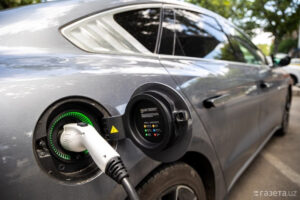
At the end of 2024, for the first time in Uzbekistan, imports of electric and hybrid cars outnumbered traditional gasoline cars. According to the Customs Committee, published by Gazeta.uz, 80,235 passenger cars worth $1.9 billion were imported into the country during the year. At the same time, this is 7% less in quantitative terms (-5,710 units) and 33.1% less in monetary terms (-$632.6 million) compared to 2023.
Imports of cars with gasoline engines decreased by 36.3%, amounting to 32,928 units (compared to 51,699 a year earlier). The cost of imports also decreased significantly – from $1.18 billion to $707.2 million (-40%). The share of gasoline cars in total imports decreased from 64.4% to 44.2%.
Imports of hybrid cars increased by 42%, reaching 17,480 units. Their total value amounted to $339.3 million, which is 17% more than in 2023. The share of hybrids in total imports increased from 15.3% to 23.4%.
Electric vehicles showed even more impressive growth: the number of imported cars increased 1.5 times, from 16,084 to 24,095 units. At the same time, their cost decreased by 48.2% to $224.8 million. The share of electric vehicles in imports increased from 20% to 32.3%.
The average cost of an imported electric car decreased almost threefold, from $26,972 to $9,330 (excluding VAT and customs duties). Hybrid cars also fell in price, but less significantly: the average price dropped by 17.6%, from $23,570 to $19,410. For gasoline cars, the decline was only 6%, from $22,858 to $21,476.
The growing demand for environmentally friendly vehicles is being stimulated by tax and customs incentives. Imports of electric vehicles are exempt from excise duties, customs duties, and road tolls. Taxi drivers using electric and hybrid vehicles are exempt from license fees until 2030. Entrepreneurs are entitled to benefits for the installation of charging stations, which will be introduced in 2023.
In addition, the registration of electric vehicles and hybrids is cheaper than that of gasoline cars. For example, the cost of registering an eco-friendly vehicle is 1.5 BRV, while for gasoline cars it is 6.84 BRV.
Problems with LPG refueling and the high cost of gasoline also contribute to drivers’ switching to electric vehicles. As a result, the share of eco-friendly vehicles in imports reached 55.8% (33,564 units), exceeding the share of gasoline cars (44.2%, 32,928 units).
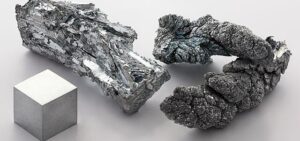
Ukraine increased its imports of zinc and zinc products by 27.5% to $58.610 million (in December – $3.802 million). Zinc exports increased to $563 thousand against $130 thousand in 2023, in December – $100 thousand.
Pure zinc metal is used to restore precious metals, protect steel from corrosion and for other purposes.
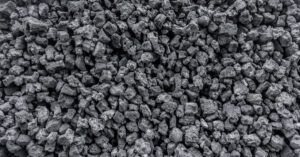
In 2024, Ukraine increased imports of coke and semi-coke in physical terms by 2.01 times compared to 2023, up to 661.487 thousand tons.
According to statistics released by the State Customs Service (SCS), coke imports in monetary terms increased by 81.9% to $235.475 million during this period.
Imports were mainly from Poland (84.76% of supplies in monetary terms), Colombia (7.74%) and Hungary (2.69%).
Last year, the country exported 1,601 thousand tons of 84.76% coke for $368 thousand to Moldova (99.18%) and Latvia (0.82%), while in January, March, October and November 2024, there were no exports, while in 2023, exports amounted to 3,383 thousand tons for $787 thousand.
As reported, in 2023, Ukraine reduced imports of coke and semi-coke in physical terms by 8.5% compared to 2022 – to 328.697 thousand tons, while imports in monetary terms decreased by 25.8% to $129.472 million.
In 2023, Ukraine exported 3,383 thousand tons of coke, down 12.3% compared to 2022. In monetary terms, it decreased by 22.2% to $787 thousand.
Exports were carried out to Moldova (100% of supplies in monetary terms), while imports were mainly from Poland (88.47%), Colombia (7.72%) and the Czech Republic (3.15%).
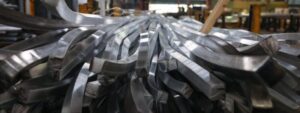
In 2024, imports of tin and tin products increased by 16.9% to $3.188 million (in December – $338 thousand). Exports of tin amounted to $389 thousand, compared to $159 thousand in 2023, with no exports in December.
Tin is used mainly as a safe, non-toxic, corrosion-resistant coating in its pure form or in alloys with other metals. The main industrial applications of tin are in white tinplate (tinned iron) for food containers, in solders for electronics, in house pipelines, in bearing alloys, and in coatings made of tin and its alloys. The most important tin alloy is bronze (with copper).
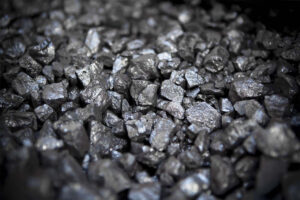
Ukraine increased imports of lead and lead products by 2.4 times to $2.391 million (December: $1.193 million). Exports of lead decreased by 22.9% to $11.401 million (December: $583 thousand).
Lead is currently mainly used in the production of lead-acid batteries for the automotive industry. In addition, lead is used to make bullets and some alloys.